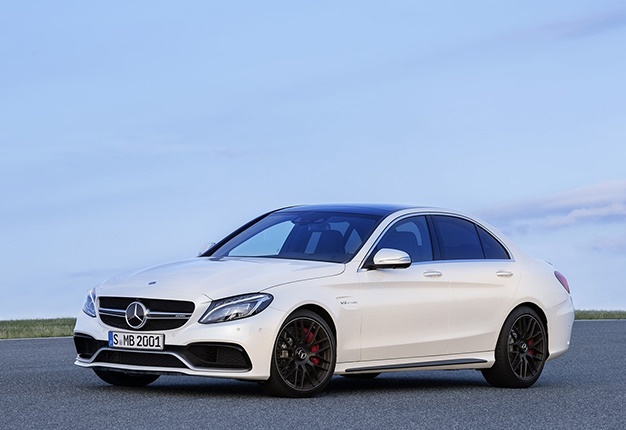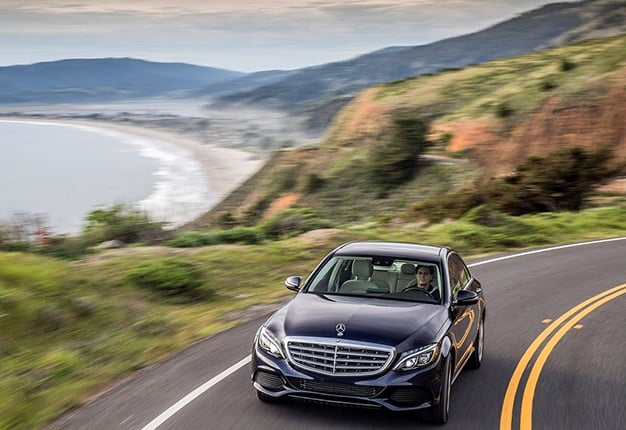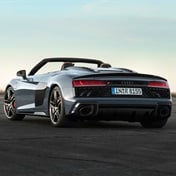Strategized as a replacement for the 190-Series, C-Class was launched in the early 1993 as the baby ‘Benz. Traditionalists found it too daring as a design, but over time it has evolved into a remarkably important car for Mercedes-Benz.
In terms of sales, this is the three-pointed star most people buy each year. With the new car launching this week, we look at five seminal C-Class derivatives from the last four-generations.
C230 Kompressor
When Mercedes introduced the C-Class in 1993, sceptics found the bright colours and on trend cabin trim a bit too far beyond traditional ‘Benz values. The engineering was very much founded in traditional Mercedes value, though.
Proof of this was the first-generation C230, distinguished by its Kompressor badging which signalled a return to supercharging for Mercedes, the first ‘Benz to feature crankshaft driven boost since in more than five decades.
At a time when BMW’s in-line sixes were giving 3 Series a nearly unassailable advantage in the German compact executive sedan market, C230 Kompressor mirrored the larger engines from Munich on outputs graphs.
The 2.3-litre in-line four rivalled power and torque figures from BMW’s 328i, and even today the Kompressor C-Class remains a revered example of Mercedes supercharging history. Especially if you can find one in the signature yellow finish.
C-Class DTM
Before German manufacturers returned to F1, all their technical resources and skills were applied to the German domestic touring car championship, or DTM, for short.
Image: Net Car Show
It remains the most radical sedan racing formula yet, with F1-rivalling levels of technology, innovation and cost. Of all the legendary DTM cars which raced at the peak of this formula in the 1990s, none were more iconic than Mercedes-Benz’s C-Class DTM.
The bodyshell might have been from a first-generation W202 C-Class, but everything else, including the active suspension and custom subframes, were fabricated by hand. The 2.5-litre engine was radical too, essentially a shortened 4.2-litre V8 from the S420 sedan, it was reconfigured as a V6 and produced 300kW.
C230 SportCoupe W203
By the time 1999 had become 2000, Mercedes was already producing the A-Class. Despite this, executives decided that a second hatchback ‘Benz was required and so the SportCoupe was evolved from a second-generation C-Class platform.
Dimensionally it was 178mm shorter than the sedan, and lacked convenient access for rear seat passengers, but was also a lot easier to park – which was a strategic aim for product planners who wanted to draw city dwellers as SportCoupe customers.
The SportCoupe was a bold initiative, with focussed execution, but much like its rival from BMW, the 3 Series Ti, buyers in the early 2000s didn’t quite know what to make of these pseudo hatchbacks.
C63 AMG
Sure, there had been C-Class AMGs before but this third-generation car revolutionised perceptions and provided foresight into AMG’s engineering prowess. Mercedes-Benz’s performance engineering subsidiary was more than a little bit upset when McLaren was entrusted with developing the SLR supercar with a three-pointed badge in 2003.
The first independent vehicle development by Affalterbach, C63 debuted with a 336kW 6.2-litre V8 and by the end of its lifecycle was producing 386kW as a DR520 limited edition in 2015.
Image: Net Car Show
It was overengineered to illustrate that AMG was sufficiently mature in its depth of technical skills to build a performance car completely on its own – without any outside assistance.
AMG’s immense success and explosive product growth in the decade after C63 debuted can be traced back to Mercedes-Benz management entrusting it with the development of a proper M3 rival, as a test. The rest, as they say, is history. Mercedes-Benz’s most exciting products are now all engineered in Affalterbach, instead of Woking…
C350e plug-in hybrid
Proof that C-Class could adapt to the changing emission environment was the first compact hybrid sedan from Mercedes. A plug-in hybrid with stellar performance and impressive output numbers, C350e also happened to be ridiculously light on fuel when driven with restraint, coasting the battery component of its drivetrain.
Image: Net Car Show
A turbocharged four-cylinder engine provided primary power, augmented by a 60kW electric motor, collaborating for a total system output of 205kW and 600Nm.
The battery was a 6.2kWh capacity lithium-ion unit with 30km of independent all-electric drive range and 2.1-litres/100km average consumption.
The first hybrid C-Class was unwittingly quick too, benefitting from the immediate torque delivery of its battery pack, and capable of 0-100kph 6.2 seconds.




 Publications
Publications
 Partners
Partners













